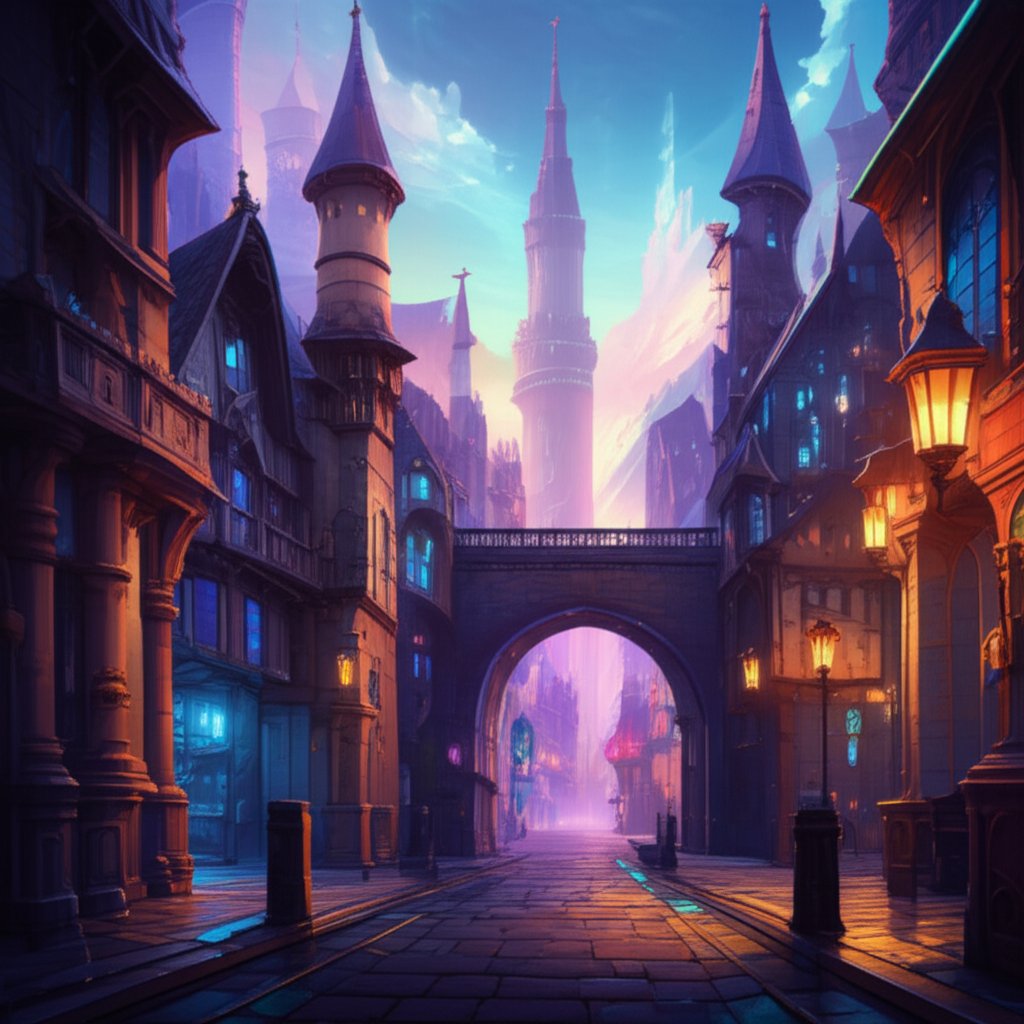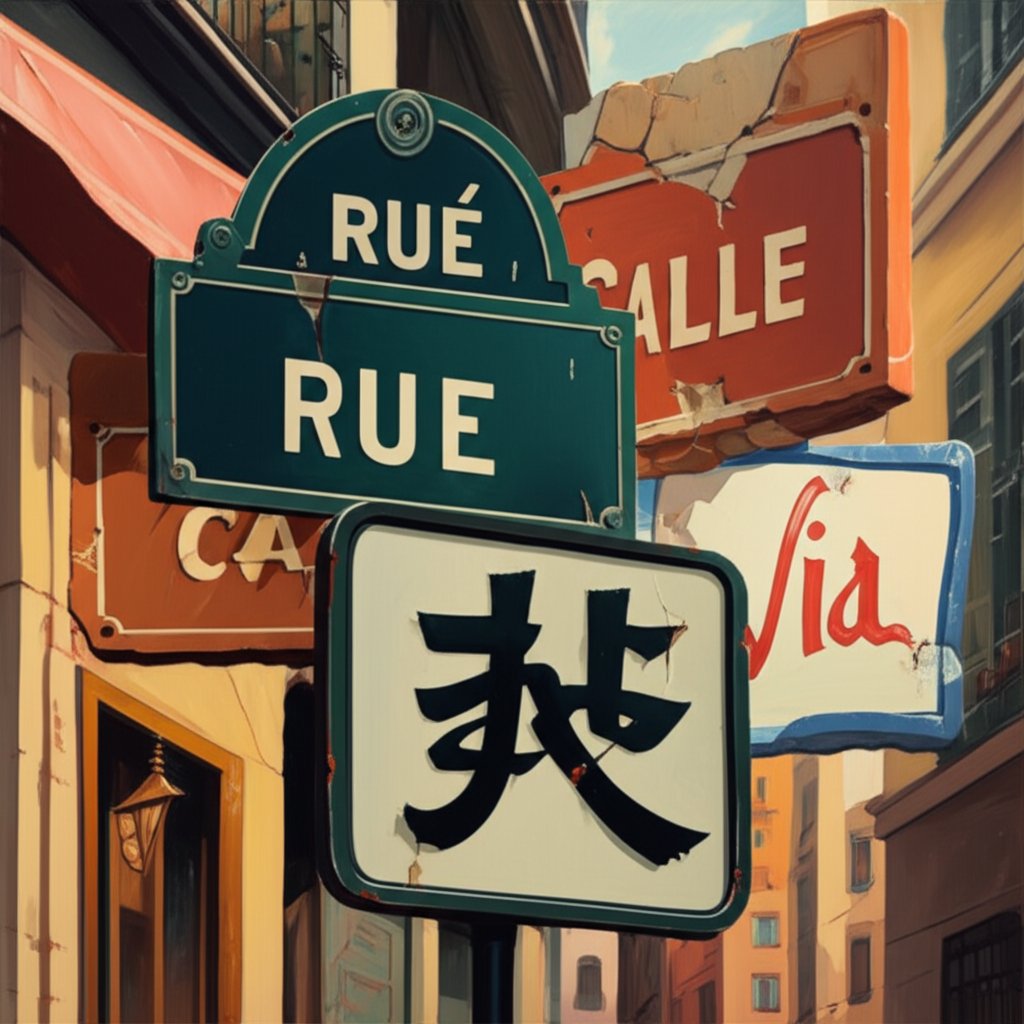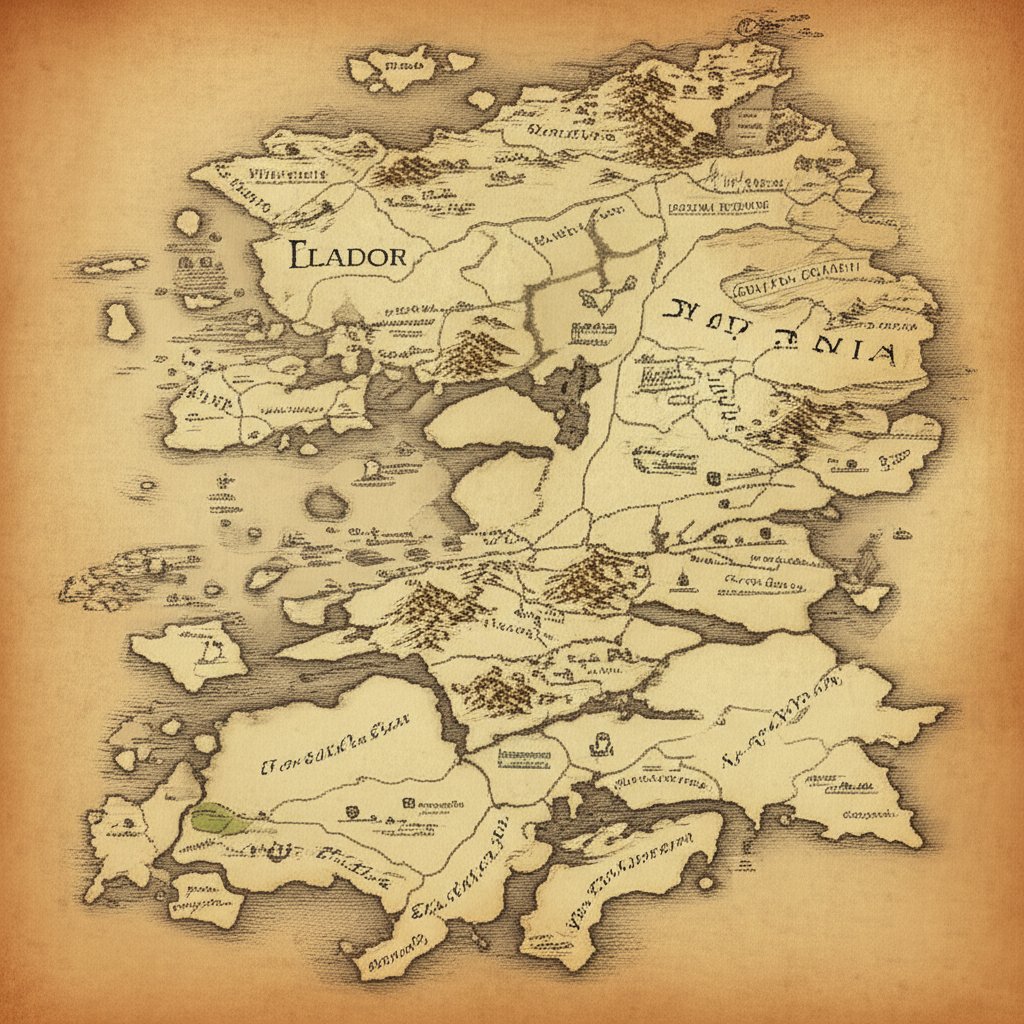Introduction to Street Name Generators
Ever found yourself stuck trying to name a street in your story, game, or city map? You’re not alone. Whether you’re a novelist building a sprawling metropolis, a game developer crafting a new neighborhood, or a dungeon master designing an immersive RPG setting, coming up with unique and fitting street names can quickly become a creative roadblock. That’s where a street name generator becomes an essential tool—offering not just convenience, but a spark of inspiration when you need it most.
Why Use a Street Name Generator?
Sounds complex? It doesn’t have to be. Imagine having instant access to hundreds of ready-made street names, each tailored to your project’s mood and setting. Instead of agonizing over every detail, you can:
- Save valuable time brainstorming names and focus on the creative work that matters.
- Ensure naming consistency throughout your world or project.
- Add realism and depth with names that evoke specific emotions or atmospheres.
- Effortlessly overcome creative blocks—no more staring at a blank page or map!
For example, a random street name generator can instantly suggest names like “Whispering Pines Lane” for a tranquil suburb, or “Enchanted Way” for a magical fantasy realm, simply by adjusting a few settings or inputting a theme.
A Tool for Every Creative Need
Street name generators aren’t just for urban planners or city designers. They’re built to serve a wide range of creative professionals and hobbyists:
- Writers & Authors: Add authenticity to novels, short stories, or scripts by integrating believable street names that reflect the setting’s history or culture.
- Game Developers: Populate maps and environments with names that enhance immersion for players.
- RPG Masters: Quickly generate names for new locations during live sessions, keeping the adventure moving.
- Event Planners & Map Makers: Create themed street names for events, conventions, or custom maps.
Types of Street Name Generators
The world of street name generators is surprisingly diverse. You’ll notice options ranging from basic city street name creators to those specializing in:
- Fantasy and Sci-Fi: Conjure up mystical or futuristic street names ideal for imaginative worlds.
- Horror and Suspense: Generate eerie, unsettling names that set the perfect tone for your story or game.
- Cultural Themes: Tailor names to specific languages or regions for added authenticity.
- Randomization: Produce a wide variety of names with just one click, ideal for quick prototyping or placeholder text.
In the chapters ahead, you’ll find a comprehensive guide to choosing and using the best street name generator for your needs—whether you’re looking for realism, creativity, or a specific genre vibe. Let’s dive in and unlock the full potential of these versatile tools for your next creative project.

Why Every World-Builder Needs a Street Name Generator
Because even the most vivid worlds can stumble on a simple curb. Picture this: your epic cityscape is mapped, its factions warring, its magic humming... but the avenue where the crucial tavern sits remains stubbornly, embarrassingly nameless. Or worse, filled with placeholder labels like "Market Road 3." This isn't just a gap; it's a crack in the immersion, a missed opportunity to deepen lore and atmosphere. That's where a dedicated street name generator stops being a mere convenience and becomes an indispensable tool in the world-builder's kit – transforming a potential creative dead-end into a springboard for richer storytelling and unparalleled authenticity.
Unlocking Creativity with Street Name Ideas
When you’re building a new world—whether for a novel, a tabletop RPG, or a game—have you ever hit a wall trying to come up with the perfect street name? Maybe you want something that feels authentic, or perhaps you’re aiming for a name that instantly sets the mood. Sounds familiar? That’s exactly where a street name generator shines.
Imagine you’re mapping out a bustling city or a sleepy village. Each street tells a story, and the right name can breathe life into your setting. But what happens when your inspiration runs dry? Or when you need dozens of names that all fit seamlessly together? This is where these tools become essential for every creative mind.
The Core Benefits: More Than Just Random Names
Let’s break down why using a generator for street name ideas is more than just a shortcut—it’s a powerful tool for world-building:
- Overcoming Creative Blocks: When your imagination stalls, a generator can instantly provide fresh, unique names, helping you move forward without losing momentum.
- Ensuring Consistency: Consistent naming is crucial for believability. Generators can help maintain a uniform style—whether you want all names to sound modern, historical, or fantastical.
- Saving Time: Instead of spending hours brainstorming, you can generate dozens of fake street names for stories in seconds, freeing up time for deeper aspects of your project.
- Adding Realism and Depth: The right street name makes a location feel real. It can hint at the history, culture, or geography of your world, making every corner of your map memorable.
- Enhancing Immersion: Names that fit your setting’s tone pull readers and players deeper into the world, making it easier for them to suspend disbelief and get lost in your story.
Street Names as World-Building Anchors
Think about iconic names like “Diagon Alley” or “Baker Street.” These aren’t just labels—they’re touchstones that anchor entire narratives. According to experts, street names act as the connective tissue in fictional settings, shaping the stories that unfold along their lengths and serving as characters in their own right.
When you use a generator, you’re not just filling empty space on a map. You’re planting seeds for future plot twists, character backstories, and unexpected discoveries. Each generated name can spark ideas for local legends, hidden histories, or unique neighborhood cultures.
Practical Examples: How Generators Support Creativity
- Writers: Need a dozen believable street names for a city? Instantly generate a list that fits your story’s era and style.
- Game Masters: Running a campaign and your players take a detour? No problem—quickly produce fitting names on the fly.
- Map Makers: Populate an entire district with names that share a theme—like flower names, local legends, or historical figures.
Ultimately, using a street name generator is about unlocking possibilities. It’s a way to ensure every street in your world feels intentional and alive. As you explore how to find the perfect general purpose street name in the next section, you’ll see just how easy it is to add that extra layer of authenticity to your creative projects.
Finding the Perfect General Purpose Street Name
Because even the most powerful generator needs a guiding hand to translate chaos into character. You've got a list of algorithmically conjured names – "Crescent Hill," "Northfield Drive," "Mosswood Way" – but which ones truly belong on your map? A general-purpose street name generator is an incredible starting engine, but the magic happens when you learn how to steer it. This isn't just about avoiding the absurd or repetitive; it's about weaving those raw outputs into the very fabric of your world's identity, ensuring every "Lane" and "Boulevard" whispers or shouts the right story to your audience. Let's unlock how to bend these tools to your creative will.
How to Use a City Street Name Generator Effectively
Ever started mapping out a city—real or fictional—only to realize you need a dozen believable street names, fast? That’s where a city street name generator comes in handy. But how do you make sure the names you pick actually sound right for your setting? Let’s break down what makes a street name feel authentic and how you can use free tools to get there.
- Start with the Basics: Most generators let you create a list of names at the click of a button—think “Maple Avenue,” “Sunset Lane,” or “Commerce Street.” If you don’t like the first batch, simply generate again for fresh options.
- Mix and Match: Don’t be afraid to combine elements from different generated names. For example, if you get “Pine Boulevard” and “River Lane,” you might tweak one to “River Boulevard” to better fit your neighborhood’s vibe.
- Consider the Setting: Urban streets often reflect local history, geography, or culture. Names like “Jefferson Avenue” or “Rainier Drive” might honor historical figures or nearby landmarks (MRSC).
The Role of Street Suffixes and Naming Conventions
Sounds simple? There’s a bit more to it. Street suffixes—like Street, Avenue, Lane, and Boulevard—carry subtle cues about the type of road and its environment. Using the right suffix helps your world feel more believable. Here’s a quick overview:
| Suffix | Common Use | Example |
|---|---|---|
| Street (St.) | Main roads, often in grids | Washington Street |
| Avenue (Ave.) | Broad, often tree-lined roads | Maple Avenue |
| Lane (Ln.) | Smaller, quieter residential roads | Willow Lane |
| Boulevard (Blvd.) | Wide, prominent streets, often with medians | Sunset Boulevard |
Choosing the right suffix isn’t just about tradition—it’s about signaling to your audience what kind of place they’re encountering. For instance, “Elm Lane” suggests a peaceful suburban street, while “Broadway” (sometimes with no suffix at all) hints at a bustling urban center (Wikipedia).
Tips for Authenticity: Make Names Fit Your World
- Match Tone and Theme: If your story is set in a modern city, stick with contemporary naming styles. For historical or culturally inspired settings, research local naming traditions or use a generator with customizable themes.
- Check for Repetition: Avoid using the same root name with multiple suffixes in one area (like “Oak Street” and “Oak Avenue” next to each other), unless that’s common in your setting.
- Think About Pronunciation: A good name should be easy to say and remember. If you’re using a street name generator free tool, generate a few options and say them aloud to see which feels most natural.
- Balance Familiarity and Uniqueness: Well-known street names like “Main Street” or “First Avenue” are realistic, but adding a few unique or locally inspired names makes your world more memorable.
By combining the power of a city street name generator with a bit of thoughtful editing, you can create a map that feels both real and rich with story potential. Next, let’s explore how to push beyond the ordinary and craft names for fantasy and sci-fi realms—where imagination truly takes the wheel.

Crafting Names for Fantasy and Sci-Fi Realms
In speculative fiction, street names aren't just labels – they're potent spells cast upon the imagination, instantly conjuring the soul of your world. A generic name here isn't merely lazy; it's a crack in the fourth wall, a dissonant note in the symphony of your creation. Genre-specific street names, however, act as sonic runes: they whisper of ancient magics thrumming beneath cobblestones or scream the chrome-and-neon heartbeat of a dystopian sprawl. This is where moving beyond the general-purpose generator becomes essential – not just for authenticity, but for wielding the raw, immersive power that defines unforgettable fantasy and sci-fi settings.
Why Genre-Specific Street Names Matter
Ever wondered why some fantasy worlds feel instantly immersive, or why a cyberpunk city seems alive from the very first page? The secret often lies in the details—especially the names of the streets your characters walk. Using a street name generator fantasy or a cyberpunk street name generator can transform a generic map into a vibrant landscape, full of history and atmosphere. But how do you make sure these names truly fit your world?
- Does your elven boulevard evoke ancient magic and grace?
- Does your neon-lit alley sound like it belongs in a bustling, tech-driven metropolis?
Let’s break down how to craft street names that not only sound right, but also deepen your world’s lore and tone.
Building Fantasy Street Names: Inspiration from Lore and Language
When you use a fantasy street name generator, you’ll notice names that conjure images of cobblestone roads, enchanted forests, or bustling medieval markets. The best generators draw on a wide array of elements—medieval professions, location descriptions, archaic words, and even snippets of forgotten languages—to create names that feel both magical and believable.
Here are some practical ways to ensure your fantasy street names fit your setting:
- Match the Setting’s Hierarchy: Use grand, lyrical names for royal highways (like “Silvermoon Way”) and simpler, earthy names for village paths (such as “Mossy Hollow Lane”). Many generators let you select by road type or social importance, adding another layer of realism.
- Choose Evocative Suffixes: Suffixes like “Path,” “Row,” “Way,” or “Crest” can signal a street’s function or history. For example, “Whisperwind Row” feels different from “Ironforge Avenue.”
- Blend Prefixes and Suffixes: Some tools allow you to mix and match, creating unique compound words that spark new story ideas. Try combining elements like “Star,” “Grove,” “Shadow,” or “Glen” with classic suffixes for endless options.
- Reflect Local Lore: Draw from your world’s mythology, notable characters, or magical events. A street named “Dragonfire Alley” instantly hints at a legendary past.
For deeper customization, reference tables of prefixes and suffixes for different fantasy cultures—Elvish, Dwarven, or Orcish—to make each district feel distinct (The Collaborative Gamer).
Designing Sci-Fi and Cyberpunk Street Names: Neon, Tech, and Edge
Switching gears to sci-fi, especially cyberpunk, the rules shift. Here, streets pulse with technology, rebellion, and a gritty urban vibe. A cyberpunk street name generator focuses on names that blend futuristic tech with urban decay—think “Neon Circuit Lane” or “Data Spire Alley”.
To make your sci-fi streets stand out:
- Use Futuristic or Tech-Inspired Terms: Incorporate words related to cybernetics, AI, or digital landscapes. Names like “Synthwave Boulevard” or “Quantum Row” immediately set a high-tech tone.
- Reflect Urban Grit: Mix in references to decay, rebellion, or underground culture. “Shadow Grid Alley” or “Junkyard Promenade” capture the duality of hope and hardship.
- Blend Cultures: Cyberpunk cities often merge global influences. Combine Japanese, Slavic, or Anglo-inspired elements for multicultural authenticity.
- Keep Names Symbolic: Many sci-fi streets are named for their function, history, or a local legend—"Runner’s End" might mark a notorious hacker’s last stand.
Balancing Creativity and Coherence
It’s tempting to go wild with naming, but coherence is key. Here’s a quick checklist to keep your world believable:
| Tip | Why it Matters |
|---|---|
| Match Name Style to Setting | Prevents jarring contrasts; keeps immersion strong |
| Limit Overly Complex Names | Ensures readability and memorability |
| Group Names by Theme | Makes neighborhoods or districts feel connected |
| Test Pronunciation | Helps players/readers engage with the world |
By thoughtfully using fantasy and sci-fi street name generators, you’ll create streets that do more than fill space—they anchor your story and spark new adventures. Next, we’ll venture into the darker corners of world-building, exploring how to generate eerie names that set the stage for horror and suspense.
Generating Eerie Names for Horror and Suspense
Why Do Street Names Matter in Horror?
Ever wondered why certain settings in horror stories send a chill down your spine before anything even happens? The answer often lies in the details—especially the names of the streets where the action unfolds. When you use a scary street name generator or creepy street name generator, you instantly add a layer of tension and foreboding that sets the mood for your entire narrative. But what makes a street name truly unsettling?
- Atmosphere: Names like “Shadow Hollow Lane” or “Midnight Crossroad” immediately conjure images of isolation and danger.
- Sound and Rhythm: Hard consonants, sibilant sounds, and unusual word pairings can make a name feel off-kilter or menacing.
- Historical Allusions: References to infamous events or folklore (think “Gallows Road” or “Witch’s Path”) tap into collective fears.
When you’re building a haunted house, designing a horror-themed game, or writing a suspenseful novel, these subtle cues can be the difference between a forgettable setting and one that lingers in your reader’s mind (Pinterest).
How Scary Street Name Generators Work
Sounds complex? It’s actually straightforward. Most generators allow you to:
- Select the type of name—scary, haunted, or even gangster for a grittier vibe.
- Input specific themes or keywords, like “ghost,” “grave,” or “night.”
- Choose the number of names you need and further customize results for your project.
For example, entering “fog,” “abandoned,” or “whisper” often yields names that evoke mystery and unease—perfect for a horror map or spooky short story.
The Psychology Behind Creepy Street Names
What makes a street name feel creepy? There’s real psychology at play. Certain words and sounds are universally associated with fear or discomfort. Consider these elements:
- Dark Imagery: Names with references to night, shadows, or decay (“Nightshade Alley,” “Rotting Elm Street”) trigger primal fears.
- Ambiguity: Vague or incomplete names (“The Crossing,” “No Return Lane”) leave much to the imagination, increasing suspense.
- Historical Weight: Using names tied to real or legendary tragedies—like “Ocean Avenue,” made infamous by The Amityville Horror—instantly raises the stakes.
Even numbers can add to the effect—addresses like “13 Elm Street” or “666 Raven Road” have become staples in horror lore, blending superstition with storytelling.
Tips for Choosing the Perfect Name
Ready to create your own haunted setting? Here’s a quick checklist for picking names that send shivers down your audience’s spine:
- Mix Familiarity with the Uncanny: Start with ordinary words (like “Willow” or “Hill”) and twist them with dark or unexpected modifiers (“Weeping Willow Lane,” “Silent Hill Road”).
- Use Alliteration and Rhyme: Names like “Creeping Creek” or “Bloody Branch Boulevard” stick in the mind and sound unsettling.
- Test Out Loud: Say the name aloud—does it roll off the tongue, or does it make you pause? The latter is often more memorable.
- Draw from Local Myths: Incorporate regional legends or ghost stories for added authenticity and depth.
- Customize with Generators: Use a creepy street name generator to quickly generate lists and then refine them to fit your story’s tone.
By leveraging these techniques—and the power of specialized tools—you’ll create street names that do more than set the scene. They’ll become characters in their own right, haunting your readers long after the last page is turned. Next, we’ll explore how name generators can help capture the gritty energy of urban and gangster-inspired settings, ensuring every street in your world has a story to tell.
Nailing the Vibe with Gangster and Urban Name Generators
How a Gangster Street Name Generator Sets the Scene
When you picture a gritty city block, what comes to mind? Maybe it’s a shadowy alley called “Blood Alley” or a notorious boulevard like “Scarface Avenue.” These aren’t just random names—they’re crafted to evoke a mood, hint at danger, and instantly paint a picture of the world your characters inhabit. That’s where a gangster street name generator becomes a game-changer for writers, game developers, and anyone looking to build a story with urban edge.
Sounds complex? It’s actually straightforward. These generators use algorithms and curated lists to produce names that feel tough, rebellious, and sometimes even infamous. For example, names like “Reaper Road,” “Venom Avenue,” or “Chaos Crescent” immediately suggest a place where the rules are different and the stakes are high. Want to capture the legacy of real-life mobsters? Just a few clicks can give you “Capone Court,” “Gotti Grove,” or “Luciano Lane”—names that carry a weight of history and reputation.
Why Use a Street Gang Name Generator?
When building a believable crime or urban setting, consistency and authenticity are key. A street gang name generator goes beyond just creating a list of cool-sounding names. It helps you:
- Establish Territory: Names like “Outlaw Avenue” or “Renegade Road” signal that certain streets belong to specific groups or have reputations that precede them.
- Shape Character Backstories: Imagine a character who grew up on “Savage Crescent” or “Brutal Boulevard.” The street name alone suggests a tough upbringing and influences how others perceive them.
- Create a Strong Sense of Place: Gritty, evocative names make your city map feel alive and help readers or players remember key locations.
- Enhance Thematic Consistency: Whether your story leans into rebellion, power, or unity, generators let you tailor names to fit your chosen vibe.
Want to see it in action? Here’s a quick sample of names you might generate for different vibes:
| Vibe | Example Names |
|---|---|
| Notorious | Blood Alley, Skull Street, Capone Corner |
| Rebel | Renegade Road, Rebel Boulevard, Maverick Street |
| Lawless | Pirate Place, Crook Crescent, Outlaw Avenue |
| Fierce | Savage Crescent, Vicious Lane, Relentless Road |
Tips for Using Urban Name Generators Effectively
- Understand Your Setting: Choose names that reflect the social, cultural, and historical context of your story’s neighborhood.
- Customize for Authenticity: Many tools let you input themes or keywords—experiment with these to create names that match your project’s specific tone.
- Double-Check for Relevance: Make sure the generated names fit your world and don’t feel out of place or too generic. For example, “Chaos Crescent” might work in a dystopian city, but not in a peaceful suburb.
- Mix and Match: Don’t hesitate to tweak generated names or combine elements for something truly unique.
And remember, the best urban street names are more than labels—they’re shorthand for the stories, struggles, and reputations that shape your world.
Going Global: The Power of Culturally Specialized Generators
But what if your story stretches beyond Western urban landscapes? Perhaps you want to create a street name that reflects East Asian culture or another global influence. This is where culturally specialized generators step in. For instance, the Chinese Name Generator from OldWestHistory.net offers a way to craft unique, meaningful names and nicknames rooted in authentic cultural traditions. Instead of a generic alias, you can generate a name with deep significance—perfect for characters or locations that need a distinctive global identity.
Using these specialized tools, you’ll not only capture the vibe of your chosen genre or culture, but also add a layer of realism and depth that makes your world stand out. Next, let’s explore how to achieve even greater authenticity by tapping into location-specific street name generators for Spanish, French, or Italian settings—and see how cultural accuracy can elevate your creative project.

Achieving Authenticity with Location-Specific Names
When you’re crafting a world inspired by real places, have you ever wondered if your street names truly fit the culture? Imagine setting your story in Paris, Madrid, or Shanghai—would “Elm Street” make sense, or would it break the immersion? Getting these details right is more than a matter of style; it’s about showing respect for the source culture and creating a believable world that resonates with readers and players alike.
Why Cultural and Linguistic Accuracy Matters
Sounds complex? It doesn’t have to be. The names we give to streets reflect history, language, and local identity. Whether you’re using a Spanish street names generator for a bustling barrio or a French street name generator for a quaint village, the goal is to match the tone, structure, and spirit of the real place. Doing so not only boosts realism, but also helps your audience connect with your world on a deeper level.
- Authenticity: Accurate names anchor your setting, making it feel lived-in and genuine.
- Respect: Using culturally appropriate names signals appreciation and understanding of the source culture.
- Storytelling: Names can reveal local history, honor notable figures, or reflect the area’s geography.
For instance, French streets often reference historical events or professions—think “Rue du Moulin” (Mill Street) or “Rue Victor-Hugo” (Victor Hugo Street), while Spanish names might highlight saints, landscapes, or local heroes. Getting these nuances right can set your project apart.
Comparing Naming Conventions Across Cultures
Let’s look at how different languages approach street naming. Notice how the structure and themes vary—using the right generator helps you capture these differences effortlessly.
| Language | Common Suffixes | Typical Themes | Sample Names |
|---|---|---|---|
| French | Rue, Avenue, Place, Boulevard | Historical figures, professions, landmarks | Rue de l'Église, Rue Pasteur, Place de la Mairie |
| Spanish | Calle, Avenida, Plaza, Camino | Saints, local heroes, nature, geography | Calle Mayor, Avenida de la Constitución, Plaza del Sol |
| Italian | Via, Piazza, Corso, Viale | Artists, historical events, landscapes | Via Roma, Piazza Dante, Corso Garibaldi |
| Chinese | Lu (路), Jie (街), Dao (道), Xiang (巷) | Virtues, nature, aspirations, family names | Renmin Lu (People’s Road), Fuxing Jie (Revival Street) |
For example, the most common French street names reference churches, schools, or historical events—"Rue de l'Église" (Church Street) and "Rue du Moulin" (Mill Street) are found in thousands of towns (Wikipedia). Spanish and Italian conventions follow similar patterns but with their own regional twists.
How to Use Generators for Realism
When using a street name generator focused on a specific language or region, try these tips:
- Choose the Right Suffix: Match the road type—"Plaza" for squares, "Avenida" for major roads, "Rue" for traditional French streets.
- Reflect Local Themes: Look for names that honor local history, natural features, or cultural icons.
- Double-Check Meaning: Use translation tools or local guides to ensure your names don’t have unintended meanings.
- Mix and Match: Combine generated names with research or personal touches for extra depth.
Imagine your story’s hero living on “Avenida de la Libertad” in Madrid or exploring “Rue des Jardins” in Paris—these details make your world feel real and immersive.
Spotlight: Authentic Chinese Naming with OldWestHistory.net
But what about East Asian settings? Here, the rules change again. Chinese street names, for example, often carry deep symbolic meaning, combining family names, virtues, or aspirations in ways that reflect thousands of years of tradition. Getting these right can be challenging if you’re not familiar with the language or culture.
This is where the Chinese Name Generator from OldWestHistory.net becomes invaluable. Unlike basic randomizers, this tool draws on a rich database of authentic Chinese names, ensuring each suggestion is both meaningful and culturally accurate. Whether you’re naming a street, a character, or a business, you’ll get options that honor tradition while offering modern flair. For example, you might generate “Fuxing Lu” (Revival Road) or “Jing’an Jie” (Peaceful Street), each with a backstory rooted in Chinese values and history.
Incorporating culturally accurate names isn’t just about ticking a box—it’s about giving your world depth and credibility. As you move forward, consider how each street name can tell a story of its own. Next, we’ll look at how visualizing these names with street sign generators can further enhance the immersion and style of your creative projects.
Bringing Your World to Life with Street Name Sign Generators
Ever wondered how a simple street sign can transform a fictional city from a flat map into a living, breathing world? When you’re building immersive environments—whether for a novel, a game, or a presentation—a street name sign generator is your secret weapon for adding visual realism and personality to every corner. But how do these tools actually bring your creative vision to life?
Why Visualizing Street Names Matters
Imagine your readers or players walking down "Whispering Pines Lane" or navigating "Scarface Avenue"—it’s not just the name that sticks, but the look and feel of the sign itself. A street name sign generator lets you quickly turn your chosen names into eye-catching visuals, making your world more tangible and helping audiences connect with your setting on a new level. You’ll notice that when street signs appear in maps, storyboards, or digital scenes, they anchor the action and provide a sense of place that plain text can’t deliver.
- Enhance immersion: Visual street signs make locations memorable and help users orient themselves in your world.
- Solidify aesthetic: The style of a sign—whether modern, vintage, or rustic—sets the tone for the neighborhood or district.
- Provide ready-to-use assets: Instantly generate images for use in presentations, games, or story illustrations.
How to Use a Street Name Sign Generator
Sounds complex? It’s actually a breeze. Most online tools, like Canva’s free sign maker, let you start with customizable templates. Here’s a simple process you can follow:
- Choose your sign size and format—think small alley signs, large boulevard markers, or quirky event signage.
- Select a template that matches your world’s vibe, or start from scratch for full creative control.
- Add your street name, then personalize with fonts, colors, icons, or even logos to make the sign uniquely yours.
- Export your design as a high-quality image or order printed versions for physical props or event use (Canva).
Want to inject humor or whimsy? Many sign generators also let you play with street name generator funny options—perfect for lighthearted stories, parody maps, or themed parties. Try generating signs for “Chicken Nugget Court” or “Banana Peel Boulevard” for a playful twist!
The Impact of Sign Styles on Your World
Not all street signs are created equal. The design you choose can dramatically shift how a location feels:
- Vintage: Think ornate borders, serif fonts, and weathered textures—ideal for historical settings, cozy villages, or retro neighborhoods.
- Modern: Clean lines, sans-serif typefaces, and bold colors work well for contemporary cities or futuristic landscapes (Design Shack).
- Rustic: Hand-painted or wooden signs evoke rural charm, fantasy hamlets, or frontier towns.
- Urban/Industrial: Grungy fonts, metal textures, and graffiti elements capture the energy of city life or dystopian environments.
Choosing the right sign style isn’t just about looks—it’s about storytelling. For example, a neon-lit sign for “Data Spire Alley” instantly signals a cyberpunk district, while a wooden plaque for “Mossy Hollow Lane” sets the scene for a fantasy village. By matching sign design to your world’s tone, you reinforce the narrative and help your audience feel truly transported.
Practical Applications: From Games to Events
- Game Design: Use street sign images as in-game assets or map markers for easy navigation and added flair.
- Storytelling: Include sign visuals in illustrated novels, comics, or digital storyboards to ground your scenes.
- Presentations & Events: Create themed signs for conventions, parties, or workshops to guide guests and set the mood.
Ultimately, a street name sign generator isn’t just a design tool—it’s a bridge between imagination and reality. As you craft your next map or narrative, consider how the right sign, in the right style, can turn a simple street name into a landmark your audience will never forget. Ready to make your names stand out? In the next section, we’ll explore tips for refining and customizing generated names so every detail fits your creative vision.

Tips for Selecting and Customizing Generated Names
When you’re handed a list of names from a street name generator, how do you decide which one is right for your project? Sounds overwhelming? It doesn’t have to be. Whether you’re building a map for a game, writing a novel, or planning a new neighborhood, refining and customizing those generated street name ideas will make your world feel intentional and memorable. Let’s break down the best practices—step by step—to ensure every street name you choose fits perfectly.
Step-by-Step Checklist for Refining Street Names
| Step | Action | Why It Matters |
|---|---|---|
| 1. Generate Multiple Options | Run the generator several times, using different themes, suffixes, or keywords. | More choices let you compare styles and avoid settling for the first name you see. Variety helps spark creativity. |
| 2. Check Pronunciation and Memorability | Say each name out loud. Is it easy to pronounce? Does it stick in your mind? | Memorable, easy-to-say names are more likely to resonate with readers, players, or residents. |
| 3. Research Double Meanings | Look up unfamiliar words or phrases to avoid accidental negative or inappropriate connotations. | Prevents embarrassing or confusing results, especially in multicultural or global settings. |
| 4. Tweak Suffixes and Prefixes | Mix and match different beginnings and endings (like "Pine" with "Lane," or "River" with "Boulevard"). | Customizing suffixes can help the name feel more authentic to your setting. |
| 5. Consider Local Context | Does the name fit the region’s geography, history, or culture? Avoid misnomers—don’t use "River" if there’s no river nearby. | Ensures authenticity and helps the name blend naturally into your world. |
| 6. Test for Consistency | Compare with other street names in your project. Are you following a theme or naming convention? | Consistency creates a believable environment and avoids jarring contrasts. |
| 7. Get Feedback | Share your shortlist with colleagues, friends, or your audience. See what sticks and what falls flat. | Fresh perspectives can reveal issues you might have missed and help you pick the strongest option. |
Common Pitfalls to Avoid
- Generic Choices: Names like “Main Street” or “First Avenue” are realistic but can feel bland if overused. Mix in unique names for balance.
- Overcomplicating Inputs: Too many details can clutter the generated names. Focus on key themes or characteristics.
- Ignoring Cultural Sensitivity: Always check that names don’t unintentionally offend or misrepresent the setting’s culture.
- Neglecting the Audience: Consider who will interact with your street names—players, readers, or real residents—and ensure the names are accessible and appropriate.
Personalizing Your Street Name Ideas
Still not sure how to pick a good street name? Try these creative tweaks:
- Borrow from Local Landmarks: Use names of trees, hills, or historical figures relevant to your location.
- Blend Themes: Combine elements from nature, history, or fantasy for a layered effect—like “Silverleaf Crescent” or “Beacon Hollow Lane.”
- Play with Spelling: Alternate spellings (“Pointe” instead of “Point”) can add flair, but use them sparingly and with purpose (LAVIDGE).
Ultimately, refining generated street names is about balancing creativity, clarity, and context. By following these steps, you’ll ensure every street in your world feels intentional, memorable, and true to your vision. Ready to put these ideas into action? In the final section, we’ll recap how the right tools and strategies can help you build richer, more immersive worlds—one street name at a time.
Conclusion
Ever wondered what separates a forgettable map from a world that feels truly alive? It often comes down to the details—especially the names that fill your streets, alleys, and boulevards. Throughout this guide, you’ve seen how the best street name generator can spark creativity, save time, and bring unmatched authenticity to your projects, whether you’re designing a fantasy city, crafting a gritty urban landscape, or building a culturally rich neighborhood.
Why the Right Generator Matters
When you use a street name generator thoughtfully, you unlock a toolkit that goes far beyond random lists. Here’s what you gain:
- Instant Inspiration: Say goodbye to creative blocks with unique street name generator tools that deliver fresh ideas in seconds.
- Consistency and Realism: Maintain a coherent naming convention across your world, whether it’s a bustling metropolis or a quiet village.
- Genre and Theme Flexibility: From horror to cyberpunk, and from historical to contemporary, you can match names to your story’s tone with ease.
- Cultural Authenticity: Specialized generators ensure your settings reflect real-world language and tradition, adding credibility and depth.
- Customization: The best tools let you tweak themes, suffixes, and even linguistic nuances, so every name feels handpicked for your vision.
Imagine the difference when your map features names like “Whisperwind Row” for a fantasy tale, “Reaper Road” for a suspenseful crime story, or “Fuxing Lu” for an East Asian-inspired city. Each name becomes a storytelling anchor, shaping how your audience experiences your world.
How to Choose the Best Street Name Generator for Your Needs
With so many options, how do you find the right fit? Ask yourself:
- What genre or cultural context am I working in?
- Do I need quick, random names or highly customized options?
- Is authenticity—especially with non-English names—important for my project?
For general use, versatile generators offer a wide range of themes and instant results. For projects requiring deeper cultural or linguistic accuracy, turning to specialized tools is essential. For example, if you’re creating a character or street for an East Asian setting, a standard randomizer won’t cut it.
Spotlight: Chinese Name Generator—A Unique Solution for Global Storytelling
If you’re seeking a truly unique street name generator that respects cultural depth, consider exploring the Chinese Name Generator from OldWestHistory.net. Unlike generic tools, this platform draws on thousands of years of naming tradition, blending AI efficiency with genuine cultural meaning (OldWestHistory.net). Whether you’re naming a street, character, or online persona, you’ll find options that are both creative and authentic—perfect for making your world stand out on a global stage.
Ready to Start Naming?
Sounds exciting? The journey to unforgettable world-building begins with a single name. Use the insights and tools from this guide to experiment, customize, and refine until every street in your project feels intentional and alive. Don’t settle for bland or generic—let your names tell stories, evoke emotion, and invite exploration.
Start today by trying out the recommended generators, including culturally specialized options like the Chinese Name Generator. With the right approach, you’ll create richer, more immersive worlds and character identities that leave a lasting impression—one street name at a time.
Street Name Generator FAQs
1. How does a street name generator work?
A street name generator uses algorithms and curated lists to instantly create street names based on selected themes, genres, or cultural influences. You can choose settings like fantasy, horror, or urban to get names that fit your project's tone. Many generators also allow you to customize suffixes and prefixes for added realism.
2. Can I use a street name generator for different genres?
Yes, most street name generators offer options for various genres, including fantasy, sci-fi, horror, and urban settings. By selecting the appropriate theme, you can generate names that enhance immersion and authenticity for any creative project.
3. How do I make sure generated street names are culturally accurate?
To ensure cultural accuracy, use specialized generators for specific languages or regions, such as Spanish, French, or Chinese. These tools incorporate authentic naming conventions, suffixes, and themes, helping you create names that respect and reflect the source culture.
4. What is the benefit of using the CNG Chinese Name Generator?
The CNG Chinese Name Generator from OldWestHistory.net provides culturally authentic Chinese names and nicknames, ideal for crafting unique online identities or adding depth to East Asian-inspired worlds. Its AI-driven approach ensures each name has meaningful character, making it a valuable tool for global storytelling.
5. How can I customize street names generated by these tools?
After generating a list, you can refine names by mixing and matching prefixes and suffixes, checking pronunciation, and ensuring consistency with your project's setting. It's also helpful to research meanings and get feedback to select names that fit your creative vision.



